
02 August 2024
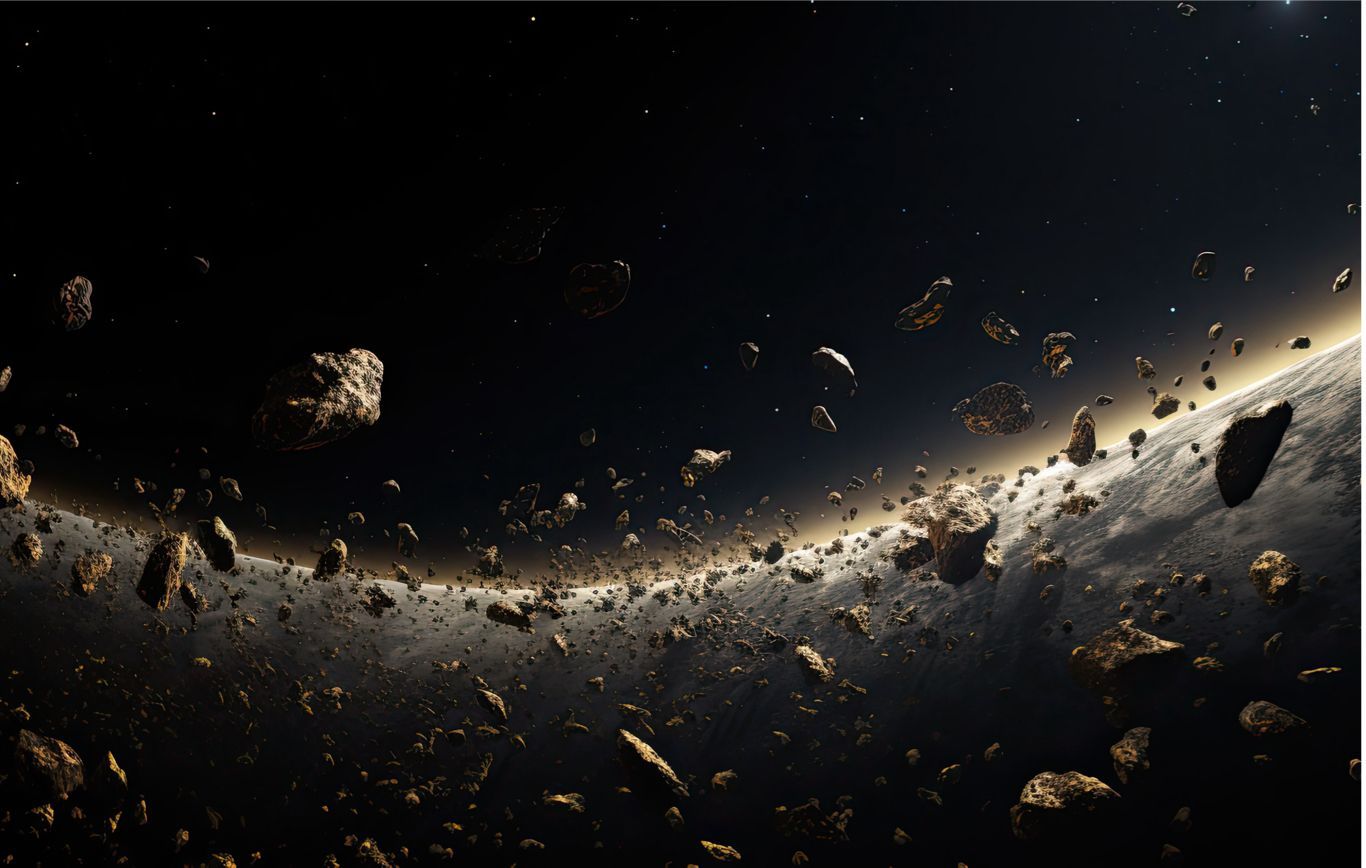
(Image: Adobe)
In 2023, US startup AstroForge launched its inaugural mission, Brokkr-1. The satellite was tasked with testing on-orbit refinery technology, using simulated materials designed to mimic those that might be mined from asteroids. Despite facing challenges in properly orienting the satellite, AstroForge adhered to a "fail fast, learn faster" philosophy, reminiscent of the innovative approaches pioneered by SpaceX.
Last year, the company outlined plans for a second mission, targeting a relay with an MK-type asteroid to collect data and images. If successful, AstroForge will be the first company to achieve this feat, paving the way for future asteroid mining. This week, the company unveiled their new spacecraft, Odin, which is scheduled to launch later this year as part of the second Intuitive Machines (IM-2) mission. The data gathered from these missions will be crucial for understanding the feasibility of mining asteroids, which could potentially yield valuable in-situ space resources.
Unlike other companies such as TransAstra and the Asteroid Mining Corporation, which adopt a step-by step approach to asteroid mining, AstroForge was founded with the explicit goal of commercial asteroid mining. This venture has potential applications on Earth, such as alleviating the environmental pressures of terrestrial mining and refining. Moreover, it holds promise for in-situ space manufacturing, which could reduce the need to launch resources from Earth for space operations, including manufacturing, servicing, and fuelling spacecraft. This capability is particularly attractive for long-duration missions to Mars and beyond, where the logistics of resupply from Earth are complex and costly.
In a similar vein, an agreement between Japan's iSpace and the US's Orbit Fab in December last year highlighted a shared ambition for in-situ resource utilisation (ISRU). Orbit Fab aims to collaborate with the Japanese lunar exploration company to establish a "propellant supply chain" in orbit and on the Moon, utilising lunar and asteroid resources. This initiative could be a game-changer for space logistics, enabling sustained human and robotic presence in space by providing essential materials like fuel and water.
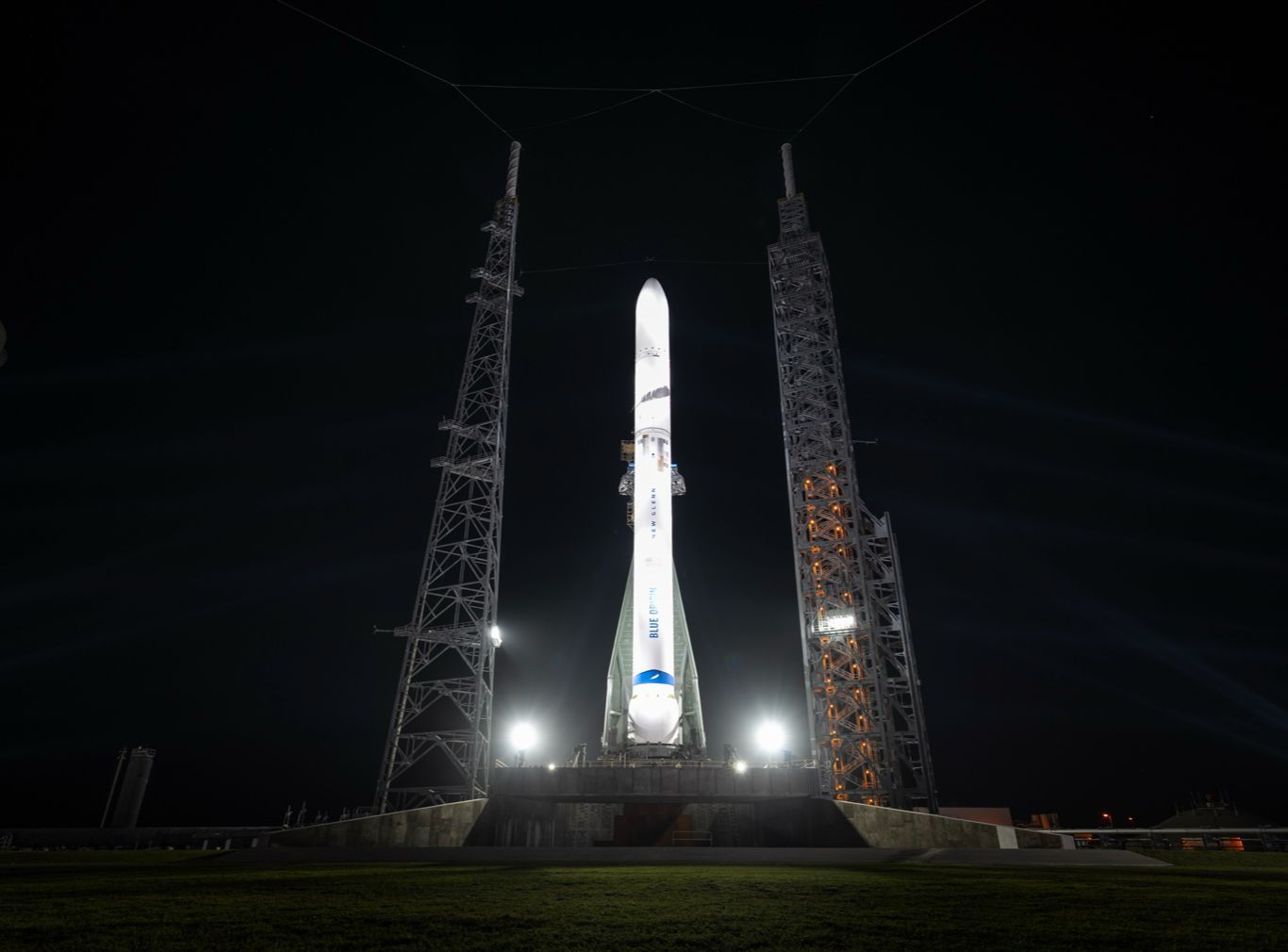
New Glenn rocket (Image: Adobe)
Private Sector Drives Space Exploration and Resource Utilisation
The private sector, particularly in the US, is at the forefront of asteroid mining and ISRU projects, aiming to secure a leading position in space development. This trend was underscored by the US Defense Advanced Research Projects Agency (DARPA) with its LuNa-10 initiative, which selected 14 companies to study the development of a commercial lunar economy within the next decade. These studies are expected to pave the way for a range of commercial activities on the Moon, from mining lunar regolith to extracting water ice for life support and fuel production.
NASA, too, is increasingly turning to private companies to spearhead its Mars exploration efforts. In June, NASA selected seven companies to explore ways to reduce costs and increase the efficiency of their Mars Sample Return (MSR) mission. This is a particularly pressing issue for the US, given that China is progressing with its Tianwen-3 mission, which aims to return Martian samples by 2030. Among the companies conducting studies for NASA are Northrop Grumman, which is exploring optimisation strategies for the Mars Ascent Vehicle (MAV) that will launch samples from Mars to an orbiting return vehicle. Quantum Space is examining ways to simplify the Earth Return Orbiter (ERO), while Lockheed Martin is focused on reducing the overall complexity of the MSR mission.
Blue Origin and Rocket Lab are also significant contributors to NASA's Mars exploration missions. Blue Origin is set to launch NASA’s Escape and Plasma Acceleration and Dynamics Explorers (ESCAPADE) mission later this year on its New Glenn rocket. This mission aims to study the Martian magnetosphere, providing critical data on solar wind interactions and helping to prepare for future human missions. Meanwhile, Rocket Lab recently completed the integration and testing of two spacecraft that will study plasma and magnetic fields around Mars, furthering our understanding of the planet's atmospheric and surface conditions.
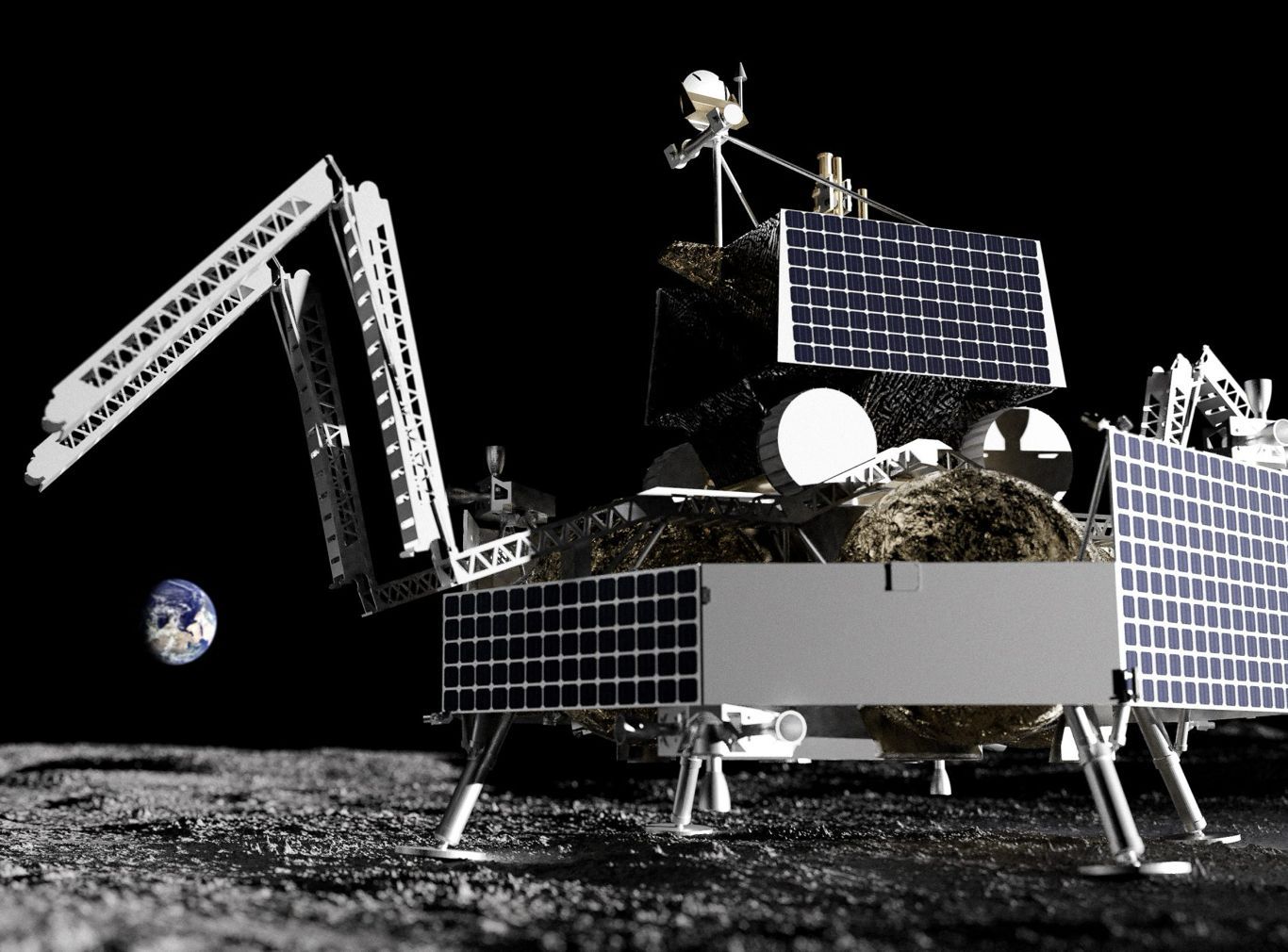
Illustration of Astrobotic's Griffin lander (Image: Astrobotic)
ESA and UAE Advance Commercial Lunar Projects
The success of the private sector has also influenced the European Space Agency (ESA) to adopt a more commercialised space strategy. At a summit in Seville last October, ESA announced a shift towards purchasing launch services from private companies instead of developing its own.
ESA are developing their own agency-led lunar lander, named "Argonaut," but are also taking a commercially-led approach to lunar exploration as well. In June the agency launched a space resources accelerator in partnership with the Luxembourg-based European Space Resources Innovation Center (ESRIC). This accelerator seeks innovative ideas for locating, extracting, and refining lunar resources, with up to €1.5 million available for initial proposals, and plans for private investors to contribute half the funding for each idea.
It was also reported that they have previously reached out to Intuitive Machines (US) to purchase their cargo transport services to the Moon. Intuitive Machines made history in February, becoming the first commercial company to successfully perform a soft landing on the lunar surface.
ESA is also supporting GMV UK in developing the Multi-Range Navigation for Fast Moon Rovers project, known as FASTNAV. This project aims to enhance rover capabilities for longer distances and higher speeds on the lunar surface, increasing average rover speeds to 1 m/s from the current 0.13 m/s. The next phase of testing is underway in Spain's Navarrese desert, chosen for its diverse terrain. This initiative is part of a broader effort to enable more efficient exploration of the lunar surface, which is critical for future missions aiming to establish a sustainable human presence on the Moon.
In the UAE, Orbital Space has announced its Orbital Space Lunar Program, set to send a student-built experiment to the Moon, marking the UAEs first privately funded lunar mission. This mission, in partnership with Astrobotic, will launch in 2026. The payload, the Lunaris Platform, was selected by experts from Orbital Space, Astrobotic, and the Mohammed Bin Rashid Space Centre (MBRSC). It will analyse interactions between lunar regolith and various materials that could be used in making cables and connectors for future lunar missions, playing a crucial role in developing ISRU technologies. This initiative underscores the growing global interest in lunar exploration and resource utilisation, highlighting the UAE's commitment to becoming a significant player in space exploration.
The contributions of state-led initiatives like China's lunar and space exploration programs are significant, as well as the US's Artemis project, are leading the drive to return humans to the Moon. This international effort includes cooperation from NASA, ESA, Japan, and the UAE, showcasing the collaborative spirit required for successful space exploration.
However, as we celebrate the achievements of governmental space agencies, it is equally important to acknowledge the increasing successes of commercial entities. The private sector's involvement is crucial for advancing technology and reducing costs, making ambitious space projects more feasible.
As we develop frameworks to ensure a peaceful and sustainable future in space, it is essential that the burgeoning private sector is not only properly regulated but also represented. Their involvement will be instrumental in building our future in outer space, ensuring that the benefits of space exploration and resource utilisation are widely shared.

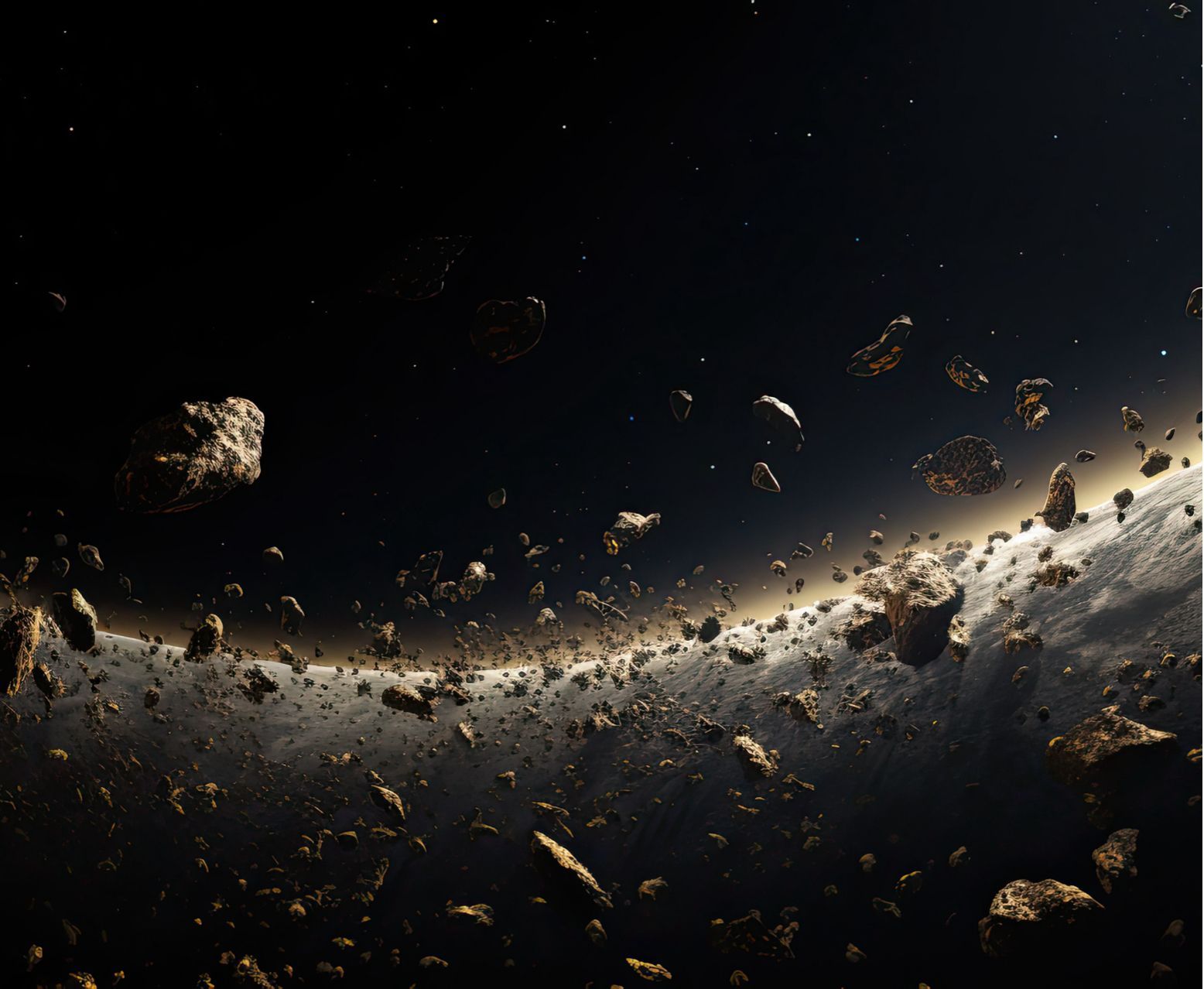
(Image: Adobe)
02 August 2024
AstroForge Second Asteroid Mining Mission, Private Sector Leads NASA Efforts, First UAE Private Moon Mission, and Europe's Lunar Economy Initiative - Space News Roundup

In 2023, US startup AstroForge launched its inaugural mission, Brokkr-1. The satellite was tasked with testing on-orbit refinery technology, using simulated materials designed to mimic those that might be mined from asteroids. Despite facing challenges in properly orienting the satellite, AstroForge adhered to a "fail fast, learn faster" philosophy, reminiscent of the innovative approaches pioneered by SpaceX.
Last year, the company outlined plans for a second mission, targeting a relay with an MK-type asteroid to collect data and images. If successful, AstroForge will be the first company to achieve this feat, paving the way for future asteroid mining. This week, the company unveiled their new spacecraft, Odin, which is scheduled to launch later this year as part of the second Intuitive Machines (IM-2) mission. The data gathered from these missions will be crucial for understanding the feasibility of mining asteroids, which could potentially yield valuable in-situ space resources.
Unlike other companies such as TransAstra and the Asteroid Mining Corporation, which adopt a step-by step approach to asteroid mining, AstroForge was founded with the explicit goal of commercial asteroid mining. This venture has potential applications on Earth, such as alleviating the environmental pressures of terrestrial mining and refining. Moreover, it holds promise for in-situ space manufacturing, which could reduce the need to launch resources from Earth for space operations, including manufacturing, servicing, and fuelling spacecraft. This capability is particularly attractive for long-duration missions to Mars and beyond, where the logistics of resupply from Earth are complex and costly.
In a similar vein, an agreement between Japan's iSpace and the US's Orbit Fab in December last year highlighted a shared ambition for in-situ resource utilisation (ISRU). Orbit Fab aims to collaborate with the Japanese lunar exploration company to establish a "propellant supply chain" in orbit and on the Moon, utilising lunar and asteroid resources. This initiative could be a game-changer for space logistics, enabling sustained human and robotic presence in space by providing essential materials like fuel and water.
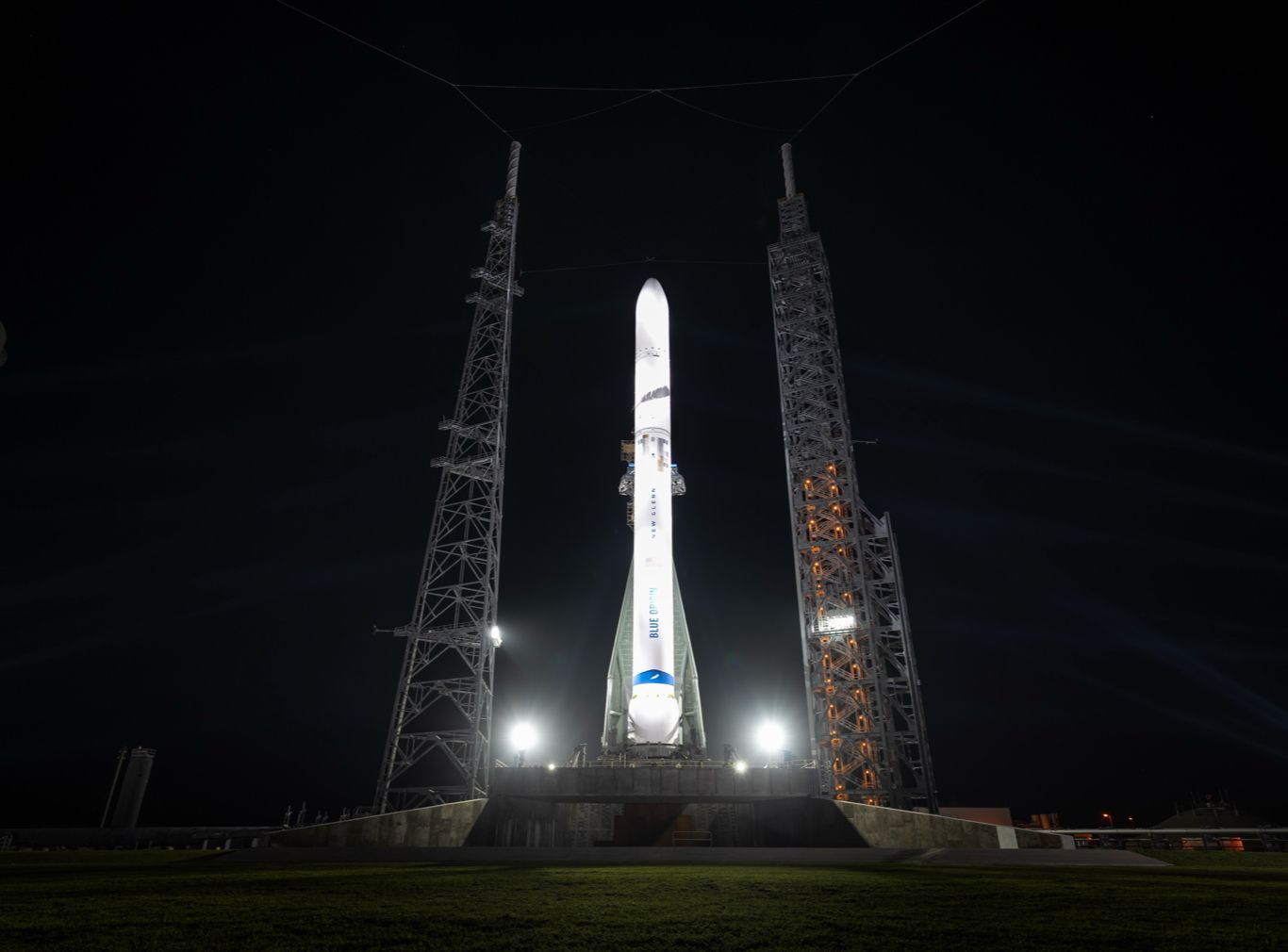
New Glenn rocket (Image: Blue Origin)
Private Sector Drives Space Exploration and Resource Utilisation
The private sector, particularly in the US, is at the forefront of asteroid mining and ISRU projects, aiming to secure a leading position in space development. This trend was underscored by the US Defense Advanced Research Projects Agency (DARPA) with its LuNa-10 initiative, which selected 14 companies to study the development of a commercial lunar economy within the next decade. These studies are expected to pave the way for a range of commercial activities on the Moon, from mining lunar regolith to extracting water ice for life support and fuel production.
NASA, too, is increasingly turning to private companies to spearhead its Mars exploration efforts. In June, NASA selected seven companies to explore ways to reduce costs and increase the efficiency of their Mars Sample Return (MSR) mission. This is a particularly pressing issue for the US, given that China is progressing with its Tianwen-3 mission, which aims to return Martian samples by 2030. Among the companies conducting studies for NASA are Northrop Grumman, which is exploring optimisation strategies for the Mars Ascent Vehicle (MAV) that will launch samples from Mars to an orbiting return vehicle. Quantum Space is examining ways to simplify the Earth Return Orbiter (ERO), while Lockheed Martin is focused on reducing the overall complexity of the MSR mission.
Blue Origin and Rocket Lab are also significant contributors to NASA's Mars exploration missions. Blue Origin is set to launch NASA’s Escape and Plasma Acceleration and Dynamics Explorers (ESCAPADE) mission later this year on its New Glenn rocket. This mission aims to study the Martian magnetosphere, providing critical data on solar wind interactions and helping to prepare for future human missions. Meanwhile, Rocket Lab recently completed the integration and testing of two spacecraft that will study plasma and magnetic fields around Mars, furthering our understanding of the planet's atmospheric and surface conditions.
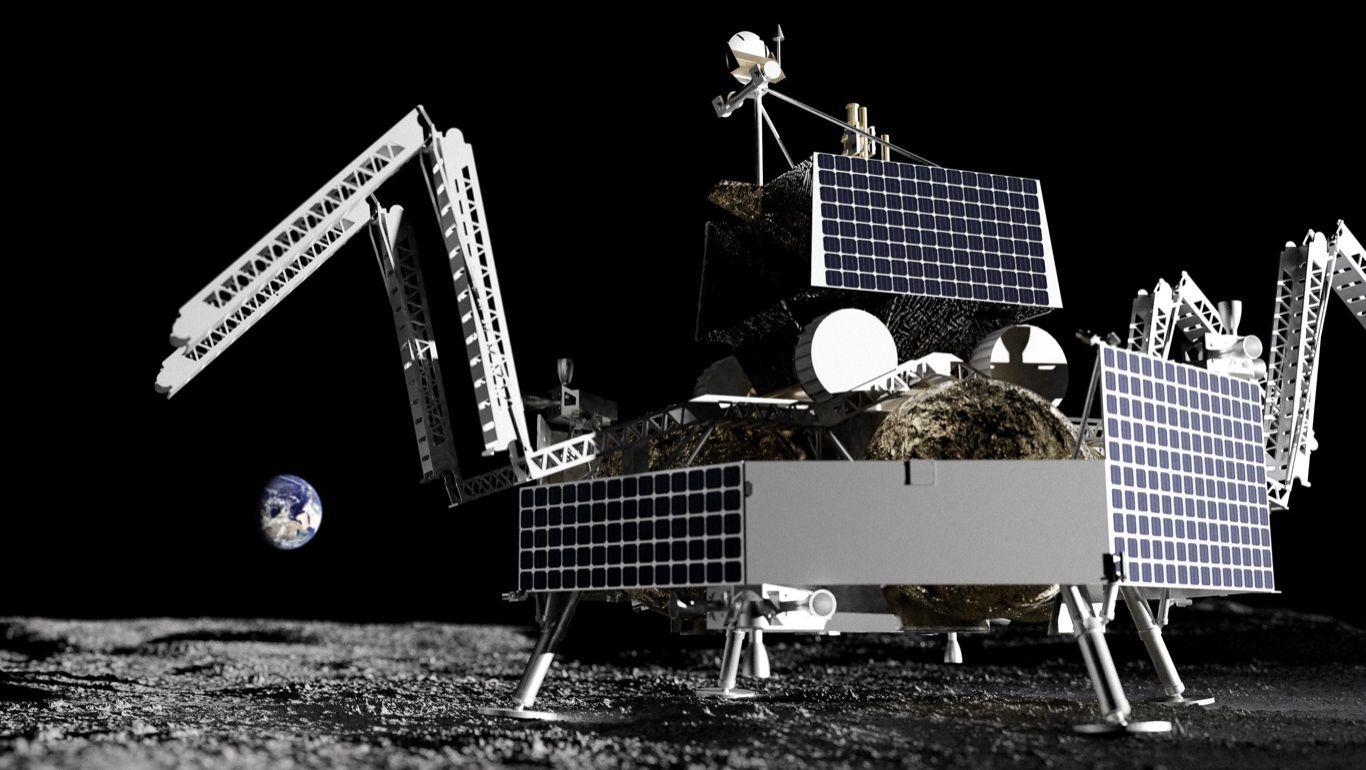
Illustration of Astrobotic's Griffin lander (Image: Astrobotic)
ESA and UAE Advance Commercial Lunar Projects
The success of the private sector has also influenced the European Space Agency (ESA) to adopt a more commercialised space strategy. At a summit in Seville last October, ESA announced a shift towards purchasing launch services from private companies instead of developing its own.
ESA are developing their own agency-led lunar lander, named "Argonaut," but are also taking a commercially-led approach to lunar exploration as well. In June the agency launched a space resources accelerator in partnership with the Luxembourg-based European Space Resources Innovation Center (ESRIC). This accelerator seeks innovative ideas for locating, extracting, and refining lunar resources, with up to €1.5 million available for initial proposals, and plans for private investors to contribute half the funding for each idea.
It was also reported that they have previously reached out to Intuitive Machines (US) to purchase their cargo transport services to the Moon. Intuitive Machines made history in February, becoming the first commercial company to successfully perform a soft landing on the lunar surface.
ESA is also supporting GMV UK in developing the Multi-Range Navigation for Fast Moon Rovers project, known as FASTNAV. This project aims to enhance rover capabilities for longer distances and higher speeds on the lunar surface, increasing average rover speeds to 1 m/s from the current 0.13 m/s. The next phase of testing is underway in Spain's Navarrese desert, chosen for its diverse terrain. This initiative is part of a broader effort to enable more efficient exploration of the lunar surface, which is critical for future missions aiming to establish a sustainable human presence on the Moon.
In the UAE, Orbital Space has announced its Orbital Space Lunar Program, set to send a student-built experiment to the Moon, marking the UAEs first privately funded lunar mission. This mission, in partnership with Astrobotic, will launch in 2026. The payload, the Lunaris Platform, was selected by experts from Orbital Space, Astrobotic, and the Mohammed Bin Rashid Space Centre (MBRSC). It will analyse interactions between lunar regolith and various materials that could be used in making cables and connectors for future lunar missions, playing a crucial role in developing ISRU technologies. This initiative underscores the growing global interest in lunar exploration and resource utilisation, highlighting the UAE's commitment to becoming a significant player in space exploration.
The contributions of state-led initiatives like China's lunar and space exploration programs are significant, as well as the US's Artemis project, are leading the drive to return humans to the Moon. This international effort includes cooperation from NASA, ESA, Japan, and the UAE, showcasing the collaborative spirit required for successful space exploration.
However, as we celebrate the achievements of governmental space agencies, it is equally important to acknowledge the increasing successes of commercial entities. The private sector's involvement is crucial for advancing technology and reducing costs, making ambitious space projects more feasible.
As we develop frameworks to ensure a peaceful and sustainable future in space, it is essential that the burgeoning private sector is not only properly regulated but also represented. Their involvement will be instrumental in building our future in outer space, ensuring that the benefits of space exploration and resource utilisation are widely shared.
Share this article


02 August 2024
AstroForge Asteroid Prospecting Mining Mission, Private Sector Leads NASA Efforts, First UAE Private Moon Mission, and Europe's Lunar Economy Initiative - Space News Roundup

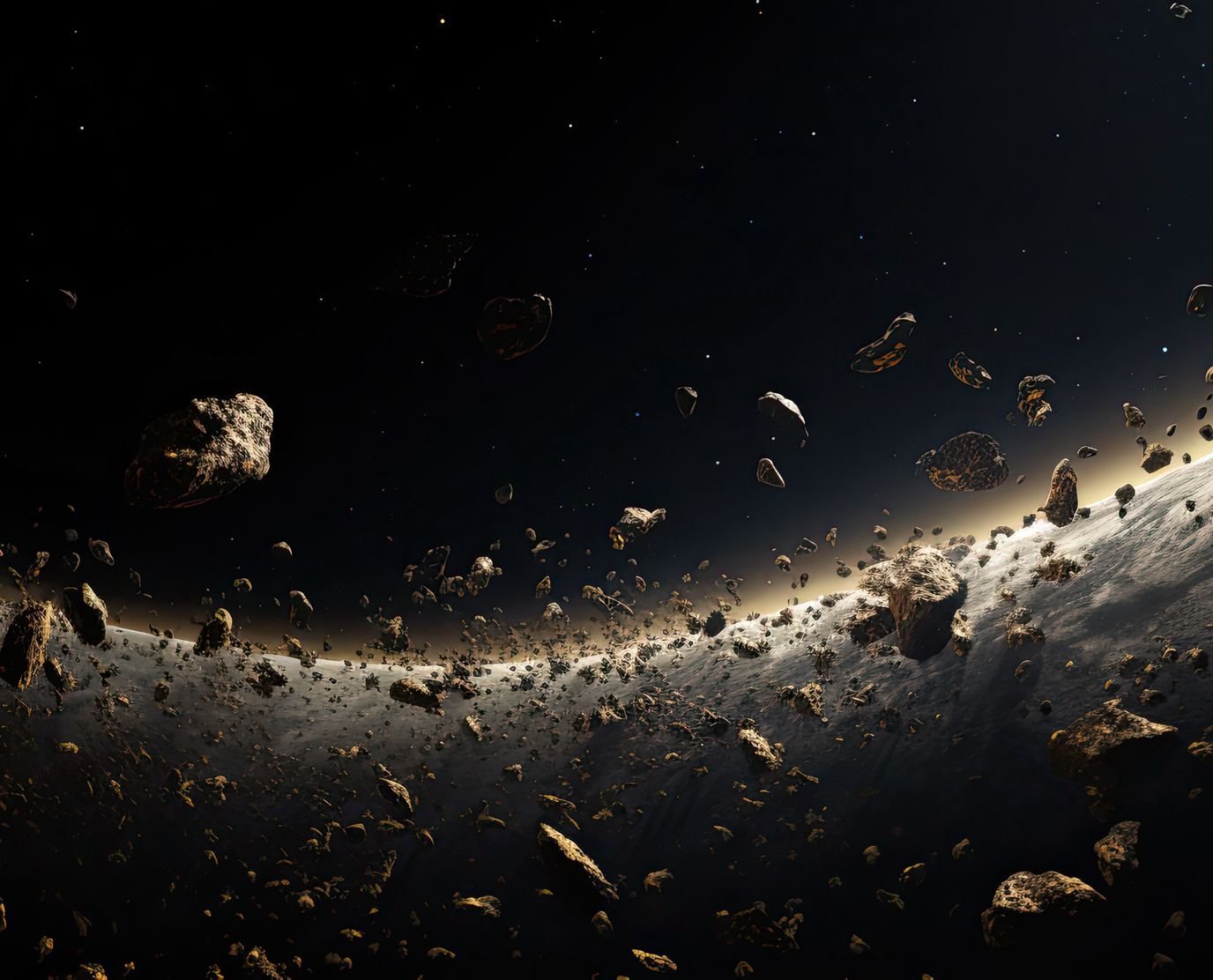
(Image: Adobe)
In 2023, US startup AstroForge launched its inaugural mission, Brokkr-1. The satellite was tasked with testing on-orbit refinery technology, using simulated materials designed to mimic those that might be mined from asteroids. Despite facing challenges in properly orienting the satellite, AstroForge adhered to a "fail fast, learn faster" philosophy, reminiscent of the innovative approaches pioneered by SpaceX.
Last year, the company outlined plans for a second mission, targeting a relay with an MK-type asteroid to collect data and images. If successful, AstroForge will be the first company to achieve this feat, paving the way for future asteroid mining. This week, the company unveiled their new spacecraft, Odin, which is scheduled to launch later this year as part of the second Intuitive Machines (IM-2) mission. The data gathered from these missions will be crucial for understanding the feasibility of mining asteroids, which could potentially yield valuable in-situ space resources.
Unlike other companies such as TransAstra and the Asteroid Mining Corporation, which adopt a step-by step approach to asteroid mining, AstroForge was founded with the explicit goal of commercial asteroid mining. This venture has potential applications on Earth, such as alleviating the environmental pressures of terrestrial mining and refining. Moreover, it holds promise for in-situ space manufacturing, which could reduce the need to launch resources from Earth for space operations, including manufacturing, servicing, and fuelling spacecraft. This capability is particularly attractive for long-duration missions to Mars and beyond, where the logistics of resupply from Earth are complex and costly.
In a similar vein, an agreement between Japan's iSpace and the US's Orbit Fab in December last year highlighted a shared ambition for in-situ resource utilisation (ISRU). Orbit Fab aims to collaborate with the Japanese lunar exploration company to establish a "propellant supply chain" in orbit and on the Moon, utilising lunar and asteroid resources. This initiative could be a game-changer for space logistics, enabling sustained human and robotic presence in space by providing essential materials like fuel and water.

New Glenn rocket (Image: Blue Origin)
Private Sector Drives Space Exploration and Resource Utilisation
The private sector, particularly in the US, is at the forefront of asteroid mining and ISRU projects, aiming to secure a leading position in space development. This trend was underscored by the US Defense Advanced Research Projects Agency (DARPA) with its LuNa-10 initiative, which selected 14 companies to study the development of a commercial lunar economy within the next decade. These studies are expected to pave the way for a range of commercial activities on the Moon, from mining lunar regolith to extracting water ice for life support and fuel production.
NASA, too, is increasingly turning to private companies to spearhead its Mars exploration efforts. In June, NASA selected seven companies to explore ways to reduce costs and increase the efficiency of their Mars Sample Return (MSR) mission. This is a particularly pressing issue for the US, given that China is progressing with its Tianwen-3 mission, which aims to return Martian samples by 2030. Among the companies conducting studies for NASA are Northrop Grumman, which is exploring optimisation strategies for the Mars Ascent Vehicle (MAV) that will launch samples from Mars to an orbiting return vehicle. Quantum Space is examining ways to simplify the Earth Return Orbiter (ERO), while Lockheed Martin is focused on reducing the overall complexity of the MSR mission.
Blue Origin and Rocket Lab are also significant contributors to NASA's Mars exploration missions. Blue Origin is set to launch NASA’s Escape and Plasma Acceleration and Dynamics Explorers (ESCAPADE) mission later this year on its New Glenn rocket. This mission aims to study the Martian magnetosphere, providing critical data on solar wind interactions and helping to prepare for future human missions. Meanwhile, Rocket Lab recently completed the integration and testing of two spacecraft that will study plasma and magnetic fields around Mars, furthering our understanding of the planet's atmospheric and surface conditions.
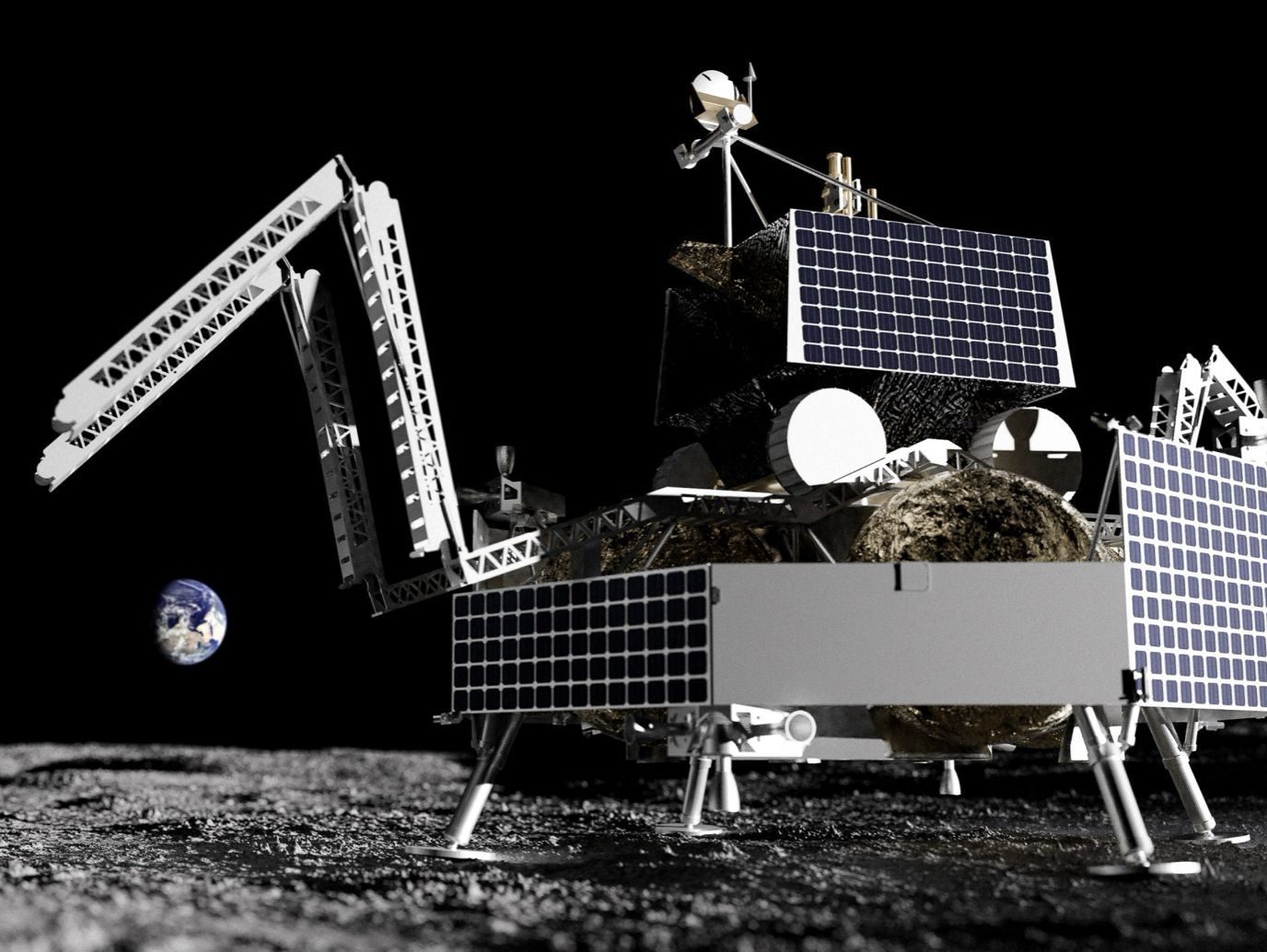
Illustration of Astrobotic's Griffin lander (Image: Astrobotic)
ESA and UAE Advance Commercial Lunar Projects
The success of the private sector has also influenced the European Space Agency (ESA) to adopt a more commercialised space strategy. At a summit in Seville last October, ESA announced a shift towards purchasing launch services from private companies instead of developing its own.
ESA are developing their own agency-led lunar lander, named "Argonaut," but are also taking a commercially-led approach to lunar exploration as well. In June the agency launched a space resources accelerator in partnership with the Luxembourg-based European Space Resources Innovation Center (ESRIC). This accelerator seeks innovative ideas for locating, extracting, and refining lunar resources, with up to €1.5 million available for initial proposals, and plans for private investors to contribute half the funding for each idea.
It was also reported that they have previously reached out to Intuitive Machines (US) to purchase their cargo transport services to the Moon. Intuitive Machines made history in February, becoming the first commercial company to successfully perform a soft landing on the lunar surface.
ESA is also supporting GMV UK in developing the Multi-Range Navigation for Fast Moon Rovers project, known as FASTNAV. This project aims to enhance rover capabilities for longer distances and higher speeds on the lunar surface, increasing average rover speeds to 1 m/s from the current 0.13 m/s. The next phase of testing is underway in Spain's Navarrese desert, chosen for its diverse terrain. This initiative is part of a broader effort to enable more efficient exploration of the lunar surface, which is critical for future missions aiming to establish a sustainable human presence on the Moon.
In the UAE, Orbital Space has announced its Orbital Space Lunar Program, set to send a student-built experiment to the Moon, marking the UAEs first privately funded lunar mission. This mission, in partnership with Astrobotic, will launch in 2026. The payload, the Lunaris Platform, was selected by experts from Orbital Space, Astrobotic, and the Mohammed Bin Rashid Space Centre (MBRSC). It will analyse interactions between lunar regolith and various materials that could be used in making cables and connectors for future lunar missions, playing a crucial role in developing ISRU technologies. This initiative underscores the growing global interest in lunar exploration and resource utilisation, highlighting the UAE's commitment to becoming a significant player in space exploration.
The contributions of state-led initiatives like China's lunar and space exploration programs are significant, as well as the US's Artemis project, are leading the drive to return humans to the Moon. This international effort includes cooperation from NASA, ESA, Japan, and the UAE, showcasing the collaborative spirit required for successful space exploration.
However, as we celebrate the achievements of governmental space agencies, it is equally important to acknowledge the increasing successes of commercial entities. The private sector's involvement is crucial for advancing technology and reducing costs, making ambitious space projects more feasible.
As we develop frameworks to ensure a peaceful and sustainable future in space, it is essential that the burgeoning private sector is not only properly regulated but also represented. Their involvement will be instrumental in building our future in outer space, ensuring that the benefits of space exploration and resource utilisation are widely shared.
Share this article

